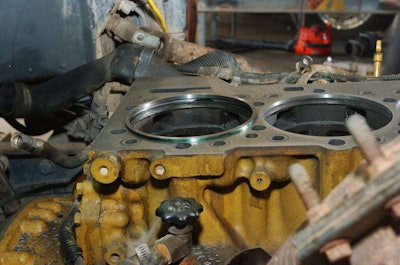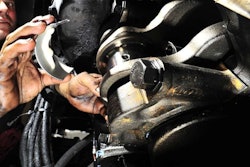 The overhead on a newly rebuilt engine should be reset at 25,000 miles.
The overhead on a newly rebuilt engine should be reset at 25,000 miles.You’ve heard the old axiom “If it ain’t broke, don’t fix it.”
Many owner-operators seem to follow that rule, but you shouldn’t get caught up in that mindset: It’s much more economical to maintain an engine and truck than it is to replace parts because of neglect.
Specifically, don’t let it apply to getting your overhead set.
Valves and injectors – or the old “run the rack” term – need to be done every 150,000 miles. A good mechanic also will look for other problems when he is setting the valves and injectors.
Make it a point every 150,000 miles to have this work done, or – like I’ve preached many times – pay the price later when a major overhaul is required, costing you a trip to the shop, parts, labor and downtime that could have been avoided.
On a newly rebuilt engine, the overhead should be reset at 25,000 miles.
Don’t forget the oil
That brings me to my next point: In freshly rebuilt engines, the oil should be changed between 1,000 and 2,000 miles.
Piston rings don’t seat into the cylinder walls; the cross-hatch seats into the piston rings. The metal that is scraped by the cylinder walls and all of the other break-in materials end up in the oil.
So drain the oil before 2,000 miles, then do the next drain at 10,000 miles and the third at 15,000.

By the time that rebuilt engine turns its first 26,000 miles, the oil should have been changed three times.
At that point, the engine is clean on the inside, and if you are going to run extended oil drains, start from there.
It may not be broke when you get the work done, but anticipating problems down the road is the best way to keep them from happening.
-Bruce Mallinson is the owner of Pittsburgh Power, an engine performance shop in Saxonburg, Pa.










